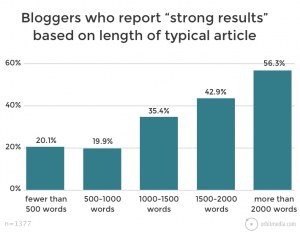
Marketing and selling technology offerings is not a simple task. The best tech marketers understand how to work with the complexity, the nuance and the bespoke nature of the tech industry. Most of all though, they understand how to work with customers and meet their modern marketing expectations instead of being tripped up by the challenges.
Here we look at four mistakes made regularly in tech marketing, but not made by the success stories in the sector.
Mistake 1. Listing features instead of showing benefits
The truth is nobody really cares about features.
Yes, it’s a shock, but I write this with much experience as a customer and a marketer.
Consumers care about what your offering can do for them and how its features become benefits in their situation.
The many tech sellers who simply state what a product does will always lose out to those who understand consumers and tell them how their lives will be improved by it.
Imagine a couple going to two car showrooms. Perhaps they want a zippy, sportscar that’s still easy on their bank account. They walk through the first showroom with no help, walking through rows of anonymous cars, going through long lists of specs trying to balance horsepower against miles per gallon and generally getting tired. In the second showroom, the sporty roadsters are helpfully labeled. An attendant sits them down, finds out what they want and in no time at all has them sat in an MX5 or Toyota Supra knowing it’s just what they want. It’s obvious who is going to get the sale.
To the customer, the right content should sound like a recommendation from someone who knows and understands them. It should seem to focus on helping them out, not outlining a product. With this type of content and the right site setup, you should have the prospect in the right place, telling them how they can benefit from the right product in no time at all.
Then the information that was previously an off-putting jumble of jargon and features becomes the start of a conversation that can help the customer choose your product. More on that below.
To target and write these benefits, you need to have an overview of your ideal buyer persona or personas. Then you figure out what will appeal most to each type of person and how they would be best presented. Then you write copy that engages them with the benefits, letting prospects know how their life or their business will be improved by your offering. The most important benefits must be the most obvious and immediately accessible. As mentioned below, you can do this multiple times for different segments and buyer personas, but this strategy must be handled carefully.
Of course, all the excellent content and clever strategy in the world can’t address a prospect as well as a real person. That brings us to our next point.
Mistake 2. Not getting prospects talking quickly enough
I’ve been on a lot of tech websites. And I’m always surprised how many expect to keep customers trawling through words, numbers and stock images for ages before suddenly asking them to go to their contact page and buy. This is not a good way to convert.
If your offering is more complicated than a hard drive, your prospects are probably going to want to talk about it before buying, rather than trawling idly through your site.
So, your online content needs to do three things well:
- Attract prospects to your site
- Get them interested enough to want to talk
- Get them talking
For complicated offerings, it doesn’t need to sell but lead into the sales conversation. The people doing the talking can do the selling.
Don’t try to sell a full-service IT offering to a business by having them check out all the information themselves. Attract them into a conversation about what they want and how you can provide it.
A website or web presence isn’t a shop window anymore but a conversation, especially for large, nuanced offerings.
- Use your copy to talk to the individual – the decisionmaker, not broadcast to the masses.
- Build relationships on social media and make them want to take the conversation further.
- Begin a conversation on Google with a relateable statement or question in your page description.
- Tell a story they can relate to.
- Ask questions they want to answer.
- Offer them a chance to reply through comments, social media or direct contact.
- Be responsive. Get back to them as much as possible
- Utilise user-created content.
- Have a person only one click away at all times. A high-performance computing company I worked for recently allows users to IM their executive board from anywhere on their site.
After this, when it comes to converting the browser to a sales contact, your prospect will be ready to talk and be open about their needs. A cold browser has been turned into a hot prospect that the salespeople can understand, relate to and close with easily.
Mistake 3. Writing too much in some places and not enough in others
Get your point across and help prospects to appreciate it with as little reading and searching as possible. There are places to write a lot, but your sales copy isn’t one.
This may sound like a pretty regular tip that’s heard repeatedly, but, many businesses put too much on their sites and elsewhere and many more don’t appreciate just how little can be enough in some places. A single well-written sentence can do more than 500 words and too much copy can bounce people from your site or have them drop your flyer. Here, too much is definitely not better than not enough.
It’s more challenging for those marketing complex, nuanced and often bespoke tech offerings to slim down their sales copy in this way than it is for simpler goods-sellers but it must be done.
Having said that, there are some places where more copy gets results. Expert marketing bloggers now report that long blogs of over 2000 words are over twice as effective as short ones of 500 or less. This is a recent turnaround from a few years ago when shorter blogs were much preferred. It’s important to take this into consideration and slim down your sales funnel while beefing up your blog.

Mistake 4. Using a scattergun, when a sniper rifle is better
If you play Call of Duty or a similar game, you’ll know that the average encounter consists of a lot of people with shotguns and machine guns being dominated by a few pros with sniper rifles. Content marketing in the SME tech sector is a lot like this. Targeting a small group well works much better than spraying out content in the hopes to hit anyone in the area.
To be honest, I’ve been guilty of this in the past. I’m now an online copy and content specialist for the tech and finance industries. When I first began though, I was trying to target every kind of business in every sector and getting nowhere.
The trick is whittle down your customers to the most groups offering the most profit and potential, and target all the content in one marketing funnel or campaign at them. For companies selling to end-customers (B2C), this can be a particular demographic, market segment, behavioural type or psychographic (beliefs, interests and attitudes). For businesses selling to other businesses (B2B), targets are usually defined in terms of industry, size, needs, budget and the target’s own target market segment.
If you aim too broad, you won’t be able to engage or appeal to prospects of each type enough to make a sale. Only large, well-known businesses with pre-existing brand appeal, like IBM can get away with doing this.
On the other hand, if you aim too narrow you will get great engagement and a great conversions ratio, but not enough prospects will see your content in the first place.
As I said in the section on writing too much, this is a particular challenge in the tech industry where offerings can be complex, nuanced and overlapping in terms of who they appeal to. Of course, you don’t want to cut valuable prospects out of your content strategy altogether, so the trick for broad-spectrum businesses can often be to spin off the marketing for particular, well-defined segments and create whole new sets of content and sub-strategies for them.
This can even benefit very large companies. For example, if I search for Amazon on almost any platform, I will be directed to their consumer sales site or their music and video offerings. I will almost never see information about their large-enterprise-focused Amazon Web Services offering in my daily life because it is efficiently targeted at another segment.
So …
Each of these common tech content marketing errors are a lesson in what not to do. Cutting them out of your strategy and your content will bring in more prospects and ultimately raise profits.
Customers care about benefits, not features.
Your website isn’t your shop window, it’s a conversation starter.
Sales copy should be shorter and blogs should be longer.
A well-aimed sniper rifle is better than a shotgun.
With this information, you can level up your content strategy and compete with the best in the business.
If you care to share any mistakes you (or others) have made in the past as a lesson to everyone else. Pop them in the comments below and we’ll see if we can lengthen this list.